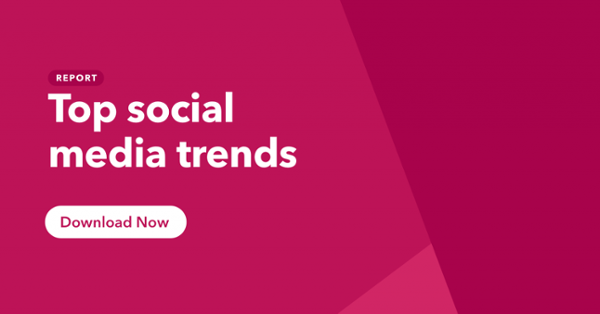As millions of vacationers now share vacation snaps and travel experiences online, social media has become a holiday browsing hotspot and commentary hive to inspire travelers globally.
And with around 8 in 10 social media users going on a domestic or overseas holiday at least once a year, there are lots of decision-making consumers at travel marketers’ fingertips.
How can travel brands make the most of the opportunity?
We asked 2,000 vacationers in the UK and U.S. questions around holiday planning and social posting. Here’s what we found.
1. User-generated content still works.
There’s no shortage of user-generated content (UGC) on social media that keeps friends and family updated and allows users to save a snapshot of their experiences; two thirds post about their holiday on social media, with 4 in 10 posting while on the holiday.
This has a huge impact on vacationers’ decisions. Consumers are actually more likely to discover travel destinations through content their peers share on social media – whether that’s photos/videos (37%) or recommendations (32%) – than branded travel ads (24%).
When researching potential destinations, social media emerged ahead of review sites like TripAdvisor, travel brands’ own sites, asking friends, and price comparison sites like Skyscanner. A third agreed social media content influences their destination choices more than content seen on TV, in print media or elsewhere online.
UGC is still a win-win for holiday makers and brands.
The brands’ experiences and destinations on offer are showcased free-of-charge, and consumers get to share themselves at their best on their own feeds. Singapore’s tourism board is just one example of a brand that has tapped into this strategy, inviting travelers to participate in their #VisitSingapore campaign on Instagram. The hashtag has generated more than 500,000 posts to date.

2. Authentic content showcasing local experiences has the biggest impact.
As traveling is far more accessible than it used to be – in part thanks to the digitalization of the industry – marketers aren’t just targeting the affluent anymore. Knowing exactly what will capture attention could really make the difference.
When asked what would sway their destination choice, it’s not surprising that climate/weather came out on top, especially among UK respondents (68%). Beyond this, the local history and culture of a place was very important for half of consumers.
Some travel brands may be playing it too safe with shots of familiar destinations or landmarks.
Instead, showcasing the local life and unique experiences could be the persuading point, especially among a new generation of travelers who want to learn about cultures rather than seek the sun. The success of Airbnb Experiences, which offer one-of-a-kind activities designed and hosted by locals, reaffirms this new travel trend.

For social media, UGC is the obvious option, as travelers are naturally more likely to post content that feels genuine and reflects the destination most accurately.
Working with the right influencers can be another effective way to ensure content is authentic and of high quality – and with guaranteed impressions – especially as travel is one of the categories where influencers are most influential. But it’s essential that brands and influencers are transparent about any paid partnerships, especially when marketing a costly holiday or experience.
3. Instagram is a natural fit for sharing, but don’t underestimate dark social.
Instagram’s format naturally lends itself to travel content – #travel is included in 363m posts on the platform – but Facebook is still the go-to for the majority of vacationers to share content when they’re away (58% vs. Instagram at 43%).
For 16-24s, Instagram just takes the lead. Travel brands’ social presence or initiatives across the platforms should ensure they’re not missing out on ways to connect with all audiences.
WhatsApp falls next in line, giving a small insight into dark social sharing.
The implication of this invisible sharing for marketers is they may be less able to track what consumers are discussing in private messaging, and the likelihood is your brand’s content is getting shared far more than you might think.
The world of dark social is still relatively uncertain, but creating content strategies tailored to encouraging travelers to share on public platforms could prove a hugely effective way for travel brands to boost their engagement with these audiences.
Alongside the challenge of keeping up with the developments that new technologies, AI and chatbots are bringing to the travel industry, it’s more essential than ever for marketers to get the most from their brand’s social presence.
Consumers don’t just want to see holiday or travel-based ads.
To stand out, travel marketers need to think outside the box, delivering authentic and easily shareable content that showcases what a destination truly has to offer.



